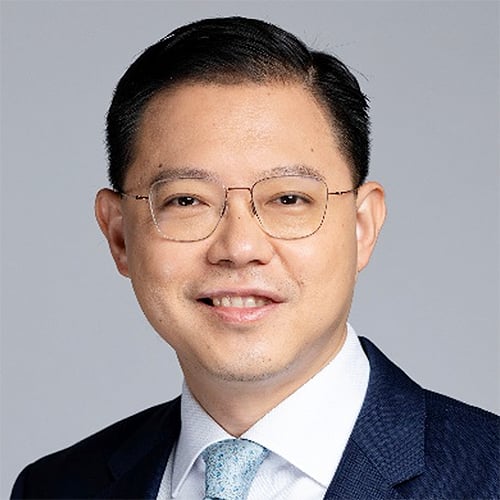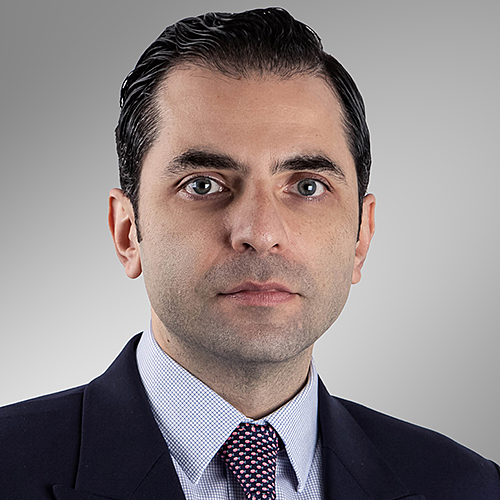Participants:
Speakers:
Seohan Soo
chief executive officer,
AmInvestment Bank
Cynthia Lum
senior portfolio manager,
Asia Pacific equities, BNP Paribas Asset Management
Datuk Chung Chee Leong
president and chief executive officer, Cagamas Berhad
Nazri Omar
managing director and chief executive officer, Danajamin Nasional
Bashar Al Natoor
global head, Islamic finance,
Fitch Ratings
Dato Mohd Izani Ghani
executive director, investments, Khazanah Nasional
Zahid Siddique
senior equity analyst, Saturna
Suhazi Reza Selamat
chief executive officer, UOB Islamic Asset Management
Mohamed Rozani Osman
financial sector specialist, World Bank
Moderator:
Chito Santiago
managing editor, The Asset
The stunning victory of the Malaysian opposition in the last May election that toppled the ruling party of more than six decades may have created uncertainty on the country’s economic prospects. It was no longer business as usual.
But many are unperturbed and described the ensuing market reactions as just short-term jitters. “Post-election, we’ve seen outflows of funds with the sell-down in Malaysian government securities,” notes Chung Chee Leong, president and CEO of Cagamas, the national mortgage corporation. “But we believe the funds will return in the medium-term as the country’s fundamentals and outlook remain positive.”
In fact, as Chung points out, Cagamas had actually issued about 1.8 billion ringgit (US$435 million) worth of bonds after the election, including a HK$300 million (US$38.45 million) offering. “This shows that foreign investors were still interested to buy high quality paper from Malaysia.”
Mohamed Nazri Omar, managing director and CEO of Danajamin, agrees, saying that everyone is positive in the medium-term about the country's bond markets and expect investors to return to the market. Even with the short-term uncertainties, he says the need for financing is still there, with the consensus that the country’s GDP will be growing by more than 5% for the rest of the year.
He discloses that during the past six months, Danajamin, which provides financial guarantees for the issuance of bond and sukuk, had met almost 40 mid-market companies – ranging from manufacturing to building materials’ companies – that expressed interest to raise some form of financing. “They still see growth potential in the next one to two years,” he adds.
Seohan Soo, CEO of AmInvestment Bank, says financing of large government projects, including toll roads has slowed, impacting on the issuance of government-guaranteed bonds that accounted for about 30% of the total bond issuances in the past two years or so.
Funds, though, continued to flow to large corporates. He estimated the total bond/sukuk issuance this year could be in the region of 90 billion ringgit to 100 billion ringgit. “The liquidity is still there,” he says. He adds investors are now looking for shorter term paper, which is very much in demand.
“Instead of a 20-year maturity, investors are now looking for paper with tenors of five years and below,” Soo says. “With the shift in the yield curve today, that is a sensible thing to do and that is what we are also advising our clients to do.”
Relating to government guarantee, Mohd Izani Ghani, executive director for investments at Khazanah Nasional, says the government should provide guarantee only to deserving issuers for the good of the market.
On the part of Khazanah, he says they are committed not to seek any more government guarantee once what they have currently expires, and as Khazanah becomes more stable over the years. “Our AAA rating is good enough for us. We have a certain group of investors that invest in our sukuk,” he says.
Suhani Reza Selamat, CEO of UOB Islamic Asset Management, says the outflow of funds was not a Malaysia-specific issue – it was both a regional and global issue. “With the US raising interest rates, there was a lot of flows going out of the region,” he notes. “Malaysia’s fundamentals are still very sound.”
From the equity perspective, Cynthia Lum, senior portfolio manager at BNP Paribas Asset Management, adds she was comfortable with the current macro environment and on the fundamentals in selected sectors with the valuations becoming attractive. “The downside risk was quite limited, especially after the recent market correction,” she says.
On the other hand, Zahid Siddique, senior equity analyst at Saturna, was cautious due to a couple of reasons. “The US interest rates are going up, and the US dollar is getting stronger. These are negative for emerging markets,” he says. “The US-China trade war is also going to impact the Asean countries that have a lot of significant export components to these two countries.”
Amid the short-term uncertainties, Malaysian issuers and borrowers continue to look at the ringgit bond/sukuk market for funding. Bashar Al Natoor, global head for Islamic finance at Fitch Ratings, notes that Malaysia has a dominant sukuk market. He says this dominance will continue as the government and corporates are likely to support such trend in the medium to long-term.
For Cagamas, timing is very important when tapping the market. Chung explains: “When banks sell to us their housing loans, they expect to receive the funds within a few days. So Cagamas does not have the luxury, as with the other issuers, to conduct a roadshow to sell the bonds and give investors time to study the offering and eventually decide whether to buy our paper or not. We need to have a very quick turnaround time.”
One of its strategies is to have regular interaction with the investors through non-deal roadshows. Another is to continuously monitor the various markets and see which markets offer the best pricing for Cagamas. “Given that we have a euro medium-term note programme, we were able to source for the cheapest funding after the cross-currency swap,” Chung adds.
In terms of markets, he says Cagamas is looking at other various options such as the Panda bond market and Formosa bond market to explore different opportunities.
Meanwhile, the World Bank is facilitating the issuance of sukuk through securing funding for the infrastructure projects. In doing so, the bank is coming up with financial innovations in order to attract investments into new projects.
“One way of doing that is through the development of green finance, which attracts a new breed of investors who are only interested in investing in environmentally-friendly projects,” says Mohamed Rozani Osman, financial sector specialist at the World Bank.
In Malaysia, the World Bank works together with the Securities Commission Malaysia and Bank Negara Malaysia. Last year, they set up a technical working group to identify potential issuers that have projects that are environmentally-friendly, but are unsure on whether the projects can carry a green label.
Soo is positive about the potential of green sukuk, noting that there had been a number of issuances since the launch of the Asean green bond standard in November 2017. He points out, though, that the transactions tend to be smaller in size, amounting to between 200 million ringgit and 300 million ringgit. Those compare with the typical deal size in the Malaysian market, ranging from 500 million ringgit to one billion ringgit or more.
For investors, Soo says it is important for them to look at the liquidity of the issuances given the sizes of the deals. “Some investors may have some limitations on the ratio of the bonds that they can invest,” he adds.
As an investor, Selamat is willing to subscribe to green sukuk. “From an Islamic asset management perspective, green is pretty much in line with the Islamic principles,” he says. “In Malaysia, as part of supporting the green programme, we have more involvement in ESG (environment, social and governance) initiative. Bank Negara has also recently introduced the strategy paper on value-based intermediation (VBI), which looks at the impact of investment and not just purely on profit.”
For Al Natoor, Malaysia has the most evolved capital markets in terms of green financing. “It has the framework, and corporates have undertaken green financing transactions,” he says. “There is commonalities between Islamic finance and green or ethical financing. Green financing develops in countries where Islamic financing is active.”
One of the themes that resonated with Malaysia Islamic finance in 2017 was social responsible investment (SRI) sukuk. Khazanah successfully raised 100 million ringgit through a second tranche of the seven-year SRI sukuk last year. That followed the issuance of the first tranche in 2015, also for 100 million ringgit, under its one billion ringgit programme.
Ghani points out that Khazanah has been working with the government as early as 2010 in transforming some schools to become trust schools, giving them funding and autonomy. The objective was not just to improve the grades of the students, but for the students themselves to improve on how they conduct themselves in dealing with their teachers and their colleagues.
It was such a success that Ghani says some agencies and individuals have expressed interest in joining the initiative. “There were suggestions that we can do a sukuk and that was when the idea of SRI sukuk came into the picture,” he recalls.
But when Khazanah came up with the structure, some investors did not like it because it featured a unique step-down return approach. “It was a tough time for me to market the sukuk as the structure did not appeal to investors,” he admits. “It was challenging to do this kind of initiative. It was not easy when you pushed the boundaries.”
But the Khazanah initiative went on. In 2016, it still had enough money to run the schools. The following year it expanded the number of schools, adding another 20 to the list.
What made it even more challenging was the fact that the transaction included a retail offering amounting to 5 million ringgit. Launching a retail offering involved a lot of disclosure under the scrutiny of the Securities Commission.
“To be fair with investors, we have to disclose a bit more information for them to be able to make rational investment decision,” says Ghani. “We negotiated with the Securities Commission and agreed to meet halfway on the disclosure requirement. Otherwise, it will take too much time to launch the offering.”
Khazanah went one step further and introduced crowdfunding platforms into the sukuk. Members of the public who were unable to subscribe to the SRI sukuk still managed to support the trust schools programme through the two platforms ATAPlus and pitchIN.
Closely related to SRI investing is the focus on ESG. Lum says incorporating ESG into its investment strategy allows it to filter out those corporates that portray long-term risk. This is especially true in certain Asian markets where compliance is weak when it comes to ESG-related disclosure.“Incorporating ESG into your investment strategy actually improves your return over the long-term,” she adds.
Siddique says all of Saturna’s funds are ESG- and Shariah-compliant. “Our clients do not want to invest in companies that are not ESG-compliant. This is an ongoing trend,” he says.





.jpg)
.jpg)


